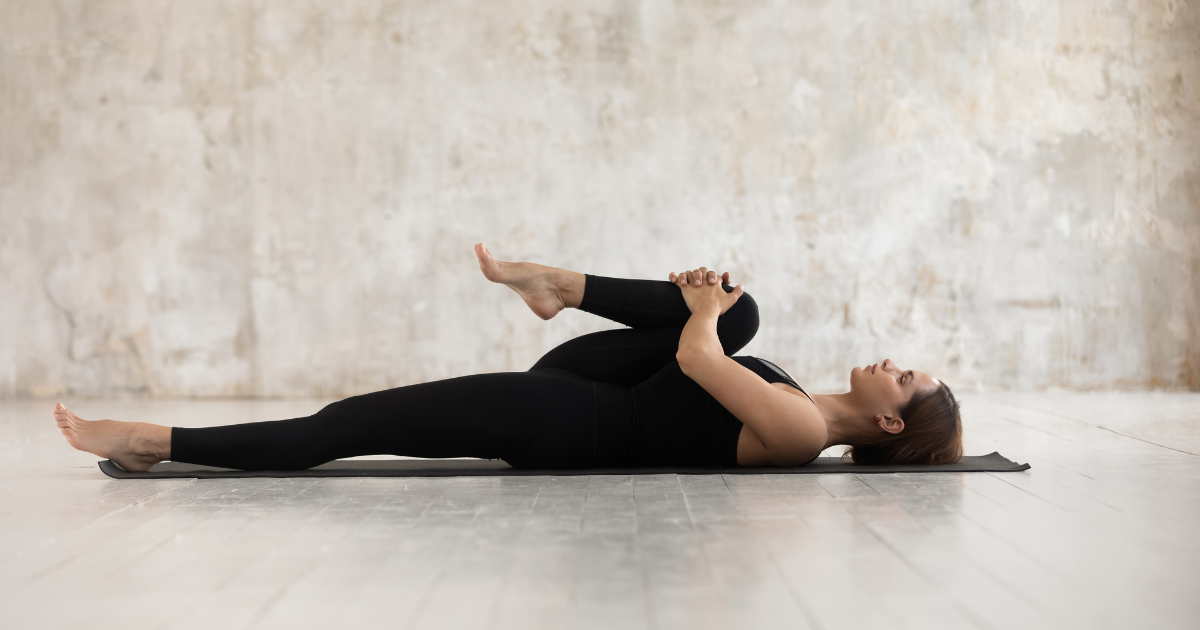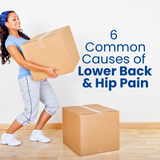What’s Causing Your Lower Back and Hip Pain?
Key Takeaways:
- Lower back and hip pain can significantly impact daily activities and may stem from causes like muscle strain, joint issues, and nerve compression.
- Understanding the root cause of your pain is crucial for finding effective solutions and relief.
- Common causes include muscle strain, joint degeneration, sciatica, and poor posture, all of which can be addressed with appropriate treatments.
- Relief strategies include rest, proper posture, stretching, strengthening exercises, and hot/cold therapy.
- LUMINAS Pain Relief Patches offer a medication-free alternative to reduce pain and inflammation, making them a convenient option for hip and back pain relief.
- Lifestyle modifications such as maintaining a healthy weight and regular movement can help prevent recurring pain.
- When to seek help: If self-care doesn’t alleviate symptoms, or if you experience numbness or weakness, professional assistance may be necessary.
Lower back and hip pain—most of us have felt them at some point, and they can throw a serious wrench into our day-to-day lives. Whether it's a dull ache or sharp, shooting pain, discomfort in these areas can stop us from doing the things we love and even the things we need to do. But don't worry—I'm here to help you understand what's causing that hip pain and, more importantly, how to find some relief.
Lower back and hip pain can result from a wide range of causes. It might be something simple, like sitting too long in a poor posture, or more complicated, like nerve issues. Whatever the case, understanding the root of the problem is key to figuring out how to tackle it.
In this blog, we'll dig deep into the causes of lower back and hip pain, explore effective relief strategies—including natural solutions like LUMINAS pain relief patches—and guide you on when it might be time to call in a professional.

Why Understanding the Cause of Hip Pain is Crucial
Understanding the cause of your back and hip pain is like solving a puzzle. If we know why something hurts, we can choose the best path to feel better. Not all pain is created equal, and neither are its solutions. Some issues might be fixed with a good stretch or a change in your daily routine, while others could require professional help.
Before diving into the causes, let’s get a quick overview of the key players in your lower back and hip. The hip joint is one of the most powerful and flexible joints in your body, crucial for almost every movement you make. The hip flexors, gluteus medius, and sciatic nerve all play significant roles in supporting your body and allowing for a range of motions. When any of these muscles or nerves are strained or injured, it can result in lower back and hip pain.
Common Causes of Hip and Lower Back Pain
1. Muscle Strain and Tension
Overuse, poor posture, or a sudden awkward movement can lead to muscle strains also known as a pulled muscle. When you overwork muscles like the hip flexors or gluteus medius, they can become tight and painful. As pain travels, a muscle strain in your leg can cause lower back and hip pain.
2. Joint Issues
Conditions like arthritis or degeneration of the hip joint can lead to chronic pain. When the cushioning cartilage wears away, bones can rub against each other, causing pain and stiffness in the hips.
3. Nerve Compression and Sciatica
The sciatic nerve is a big one. When it's compressed, pain can shoot from your lower back down to your hips and even into your leg. This condition, known as sciatica, often feels like a sharp or burning pain and can be quite debilitating.
4. Scar Tissue and Injury
Previous injuries or surgeries can leave behind scars, which might limit your range of motion and lead to pain. The human body is incredibly resilient, but sometimes scars can form in a way that restricts normal movement.
5. Poor Blood Circulation
Reduced blood flow to your hips and upper body can cause muscles to become stiff and painful. Without good circulation, muscles don't get the oxygen and nutrients they need to function properly.
6. Other Factors
There are many other factors that can contribute to lower back and hip pain, such as improper lifting techniques, a sedentary lifestyle, and obesity. All of these can put extra strain on your legs and knees resulting in pain in the hip.
How To Relieve Hip and Lower Back Pain
Now that we know what might be causing your hip pain let’s talk about how to relieve it. Here are some practical tips to help you get back to feeling your best:
1. Rest and Proper Posture
First and foremost, give yourself a break. Rest is essential for healing. But also pay attention to how you sit and stand throughout the day. Keeping your feet shoulder-width apart, feet flat on the ground, and standing upright can do wonders for reducing strain on your lower back and hips. Think of your body as a finely tuned machine—it works best when aligned properly.
2. Stretching and Strengthening Exercises
Regular stretching and strengthening exercises can significantly reduce pain and prevent future discomfort. Here are a few you should consider:
Knee-to-Chest Stretch: Lie on your back with one knee bent. Gently pull the knee toward your chest while keeping the other leg straight in one direction. This stretch can help alleviate tension in your lower back and stretch the gluteus medius.
Hip Flexor Stretch: Get into a lunge position with one leg behind you. Gently push your body forward, feeling the stretch in your hip flexor. This move is fantastic for loosening up tight hip muscles.
Glute Bridges: Lie on your back with knees bent and feet flat on the ground. Lift your hips toward the ceiling, squeezing your glutes at the top. This exercise strengthens the muscles in your hips and lower back, providing better support and reducing pain.
Use of a Small Pillow: Placing a small pillow underneath your lower back while lying down can help maintain a neutral spine position and alleviate discomfort.
Always remember to rest between stretches to avoid causing further discomfort to any area of the knees, legs, or hip.

3. Hot and Cold Therapy
Alternating between hot and cold therapy can be highly effective in helping to relieve hip pain.
Cold Therapy: Apply ice packs to the painful area to reduce swelling and numb sharp pain.
Hot Therapy: Heat can increase blood circulation, helping to relax tight muscles and reduce pain. A warm compress or hot bath can be incredibly soothing.
4. LUMINAS Hip Pain Relief Patches
LUMINAS Hip Pain Relief patches present a medication-free alternative to relieve pain. Simply apply the patch directly to your hip and let it go to work. LUMINAS Hip Pain Relief patches are charged with natural electrons, and the result of wearing the patches is a significant reduction in both pain and inflammation in the body.
When you apply LUMINAS Relief patches to your skin, your bioelectric field induces the flow of electrons directly into your body from the patches. The result is a reduction of pain and inflammation within minutes. LUMINAS Relief Patches are great for other areas of the body including the knees, legs, and shoulders.
5. Physical Therapy and Professional Help
Sometimes, professional guidance is the best route. A physical therapist can provide personalized strategies for pain management and design a specific exercise regimen to increase mobility and strengthen muscles. They can also help improve mobility but checking your posture is correct.
5. Medication and Alternative Treatments
Over-the-Counter Pain Relievers: Anti-inflammatory medications or muscle relaxers can help reduce hip pain for a short period of time during flare-ups.
Alternative Therapies: Don’t underestimate the power of massage, acupuncture, or chiropractic care. These methods can help alleviate pain by improving blood flow and reducing muscle tension.
6. Lifestyle Modifications
Maintaining a healthy weight and staying active can prevent lower back and hip pain from becoming a chronic issue. Avoid prolonged periods of sitting or standing, and make ergonomic adjustments at work and home to reduce strain.
Don’t Let Hip Pain Hold You Back Any Longer
Just because you experience hip pain and lower back, it doesn’t have to control your life. By understanding the causes and incorporating these tips and exercises into your routine, you can manage and even prevent pain effectively. Remember, consistency and proper care are your best allies in this journey. Keep moving, stay positive, and don’t hesitate to seek help when needed.
Ready to tackle your hip and lower back pain?
Buy now for targeted, drug-free relief!
When to Seek Professional Help
While most back and hip pain can be managed at home, there are times when you should seek professional help. If your pain persists and doesn’t improve with self-care, numbness, or weakness in your legs, it’s time to see a healthcare professional. Early diagnosis and treatment are vital to preventing further complications. Depending on the cause, options might include physical therapy, injections, or even surgery in severe cases.









